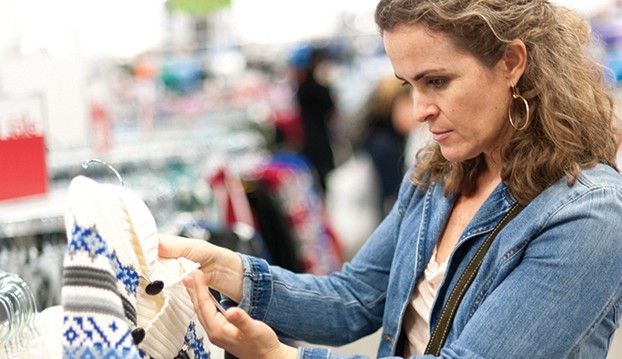Bed bugs have become a massive problem in business environments over the last ten years. A survey by National Pest Management Association notes that 44% of Americans are worried about encountering these pesky in retail stores. As a retail store owner, keeping bed bugs away is vital for your business’s success.
Infestations in retail stores may be introduced by employees, customers, and returned goods, to name a few. A well-thought-out bed bug prevention plan in your retail store is vital to stop any potential infestation. This post offers expert guidance on preventing bed bug problems in your retail store.
Table of Contents
How Bed Bugs Get Into Your To Retail Stores
Bed bugs are primarily introduced to retail stores by customers, employees, owners, and returned goods. They are good at hitchhiking. Hence, individuals can unknowingly bring them into your store on purses, backpacks, shoes, and other belongings.
Bed bugs rarely hitch a ride on clothes unless they have come in direct contact with them. Retail stores serving low-income residual areas stand a higher chance of contracting bed bugs due to difficulties associated with control and prevention. Nevertheless, retail stores in low-income and high-income areas risk contracting bed bugs without proper preventative measures.
Bed Bug Risk Areas in Retail Stores
There are bed bugs hotspots in retail stores. Depending on the activities at the stores, some areas may be more exposed to bedbugs’ manifestation than others. Employee locker rooms are at a higher risk of contracting bed bugs because they store personal belongings. High-risk areas include:
- Fitting rooms
- Shopping carts with cloth bags
- Storage rooms and backrooms
- Upholstered furniture section
- Returned goods section (check out and service counters)
Identifying Bed Bugs in Your Retail Store
Bed bugs can live for several months without feeding. This makes it extremely difficult to identify them, especially in non-conventional spaces such as retail stores. To identify bed bugs in your retail store, you need to watch for the following signs proactively:
- Red and reddish brown spots on fabrics, upholstered furniture, and other high-risk items in your store
- Complaints about bed bug bite marks on the skin by employees and patrons that frequent your store
- Bed bug exoskeletons. (You should use a UV flashlight to check for bed bug exoskeletons, especially in high-risk areas of your store)
- Heavy infestations come with a sweet, musty smell, but infestations rarely get that large in retail stores.
Preventing Bed Bugs in Your Retail Store
Reducing clutter in your retail store is an easy start to preventing bed bug infestation. Clutter and disorganized merchandise provide hiding spots for the pest, and removing them would limit their existence.
Returned goods and new merchandise pose threats to your retail store. Consider them high-risk and inspect them to avoid spreading bed bugs to other items in your retail store. Bedbugs are good at hiding, and all staff should always be vigilant and regularly check cracks, crevices, edges, and corners. Returned clothing should be placed in a plastic bag and stored differentially till examinations. It will also help if you seal all cracks and crevices in your retail store to prevent bed bugs.
Training your employees about bedbugs is the best method to prevent bedbugs in a retail store. That way, your employees would understand the importance of preventing bed bugs and contemplate actionable activities that limit their occurrence. Your employees are better positioned to check, identify and apply suitable extermination techniques for the bedbugs. Bedbugs’ education for the employees would ensure that they take the same safety practices home. This is beneficial since it reduces the chance of employees bringing bedbugs to work.
If you find bed bugs in your store, you should treat them as soon as possible to limit their spread. People often use pesticides to get rid of bed bugs, but research shows they are not as effective as most think. Instead of pesticides, you must use safe and effective bed bug treatment options in your retail store.
It is also in your best interest to deploy practical bed bug monitoring tools in your store. This way, you can be sure whether your prevention and maintenance measures are working.
Treating Bed Bugs in Your Retail Store
While prevention is better than treatment, there is a chance that bed bugs can get into your store. When this happens, you must take immediate, proactive measures to eliminate them. Here are some treatment options that you can use:
- Vacuuming: Depending on your bedbug handling skills and the scale of the infestation, you may opt to use the do-it-yourself approach. If you opt to do it yourself, you must start by cleaning the entire store with stout vacuum cleaners. Ensure all furniture, walls, corners, and other hidden spots, such as shelves, are vacuumed and cleaned. On the floor, ensure that you vacuum all the carpets while checking other office equipment for signs of bed bugs. Safely dispose of used vacuum bags in plastic bugs that would exterminate any live bed bugs.
- Steam Cleaning: In a place where you cannot apply vacuum cleaning, use steam cleaning and set it to temperatures exceeding 140° degrees Fahrenheit. This extreme temperature would exterminate bedbugs and their eggs. However, please note that the high temperatures can damage some work tools, and you need to read the manual before use.
- Washing: You can clean clothing at your retail stores since the pests might be hiding there. Make sure that you clean everything, especially in high-risk areas. You must put washable items such as linens and curtains in hot water for more than 30 minutes before washing them.
Point to Note: You must close your retail store for some time until you confirm the success of your bed bug extermination process. It is unethical to operate an infested retail store. Nobody enjoys shopping at your store if they risk taking home bedbugs with them. You also risk lawsuits from clients and employees affected by the store situations.
Final Thoughts
Having bedbugs at your retail store is detrimental to your business reputation. Every retail store owner dreads having these little critters that cause inestimable harm to your business by driving clients away. Key takeaways from this post to help combat bed bugs in your retail store include:
- Employee training, periodical checks, and inspecting returned goods and new merchandise before allowing them into your store can help prevent bed bugs.
- Deploying bed bug monitoring tools and inspecting your store is instrumental in the fight against bed bugs.
- Closing down your store upon discovering bed bugs goes a long way in safeguarding your business’s reputation.
- Methods of treating bedbugs in your stores include vacuum cleaning, steam cleaning, and dipping cloths in hot water for about 30 minutes before washing.
FAQs
How likely is it to get bed bugs in your retail store?
You are less likely to find bedbugs in your retail store. However, it depends on the quality and effectiveness of your bed bug prevention techniques.
Can bed bugs live in retail stores?
Yes. Bedbugs can live in retail stores by hiding in personal belonging, clutter, and furniture.
What is the best way to prevent bed bugs in your retail store?
The best way to prevent bedbugs at your retail store is to educate your employees about bedbugs. That way, you will collectively examine your store for bedbugs and apply necessary precautionary measures.
Can you get bed bugs from your retail store supplier?
You can get bedbugs from your suppliers if their goods are contaminated in the factory or when in transit. Bed bugs can crawl into your clothes, shoes, and other personal belonging that you can carry home.


